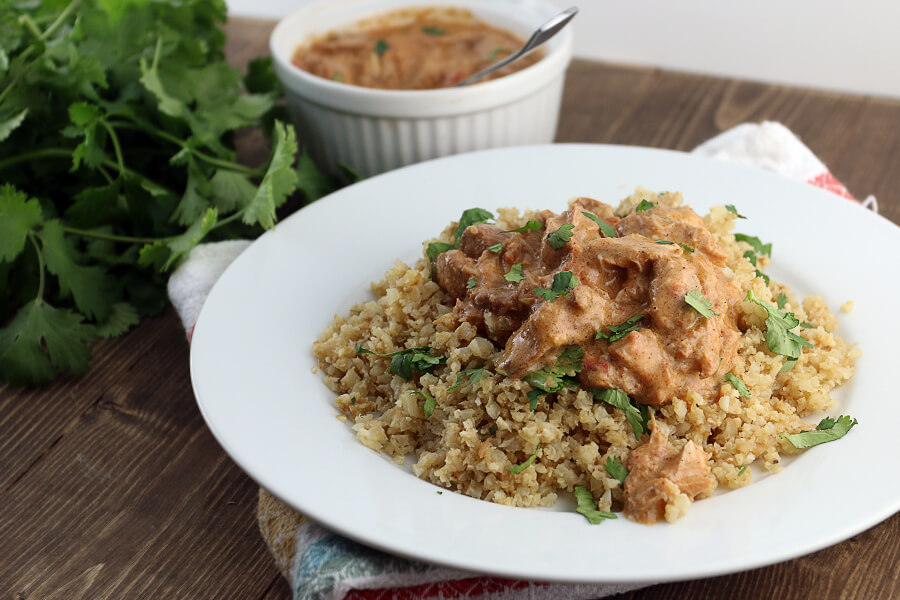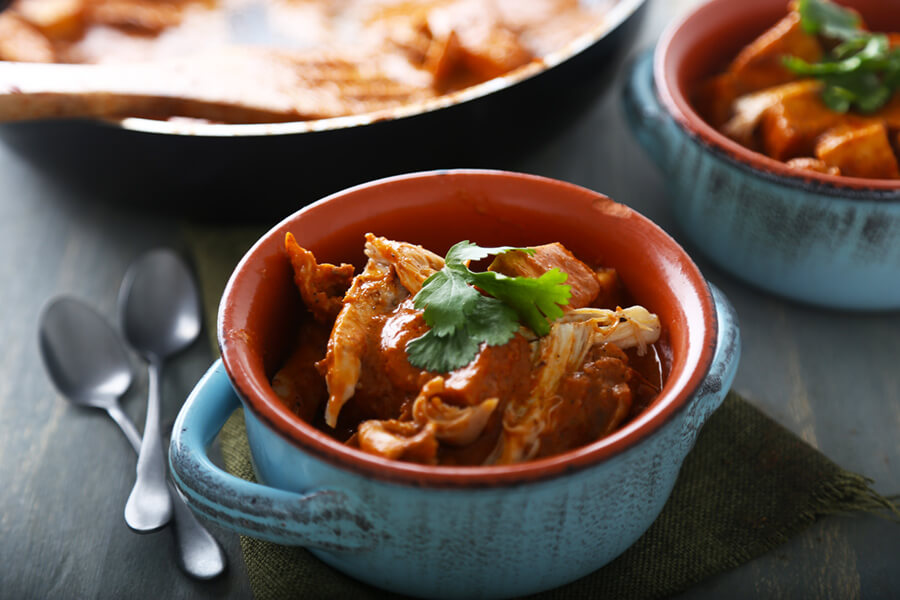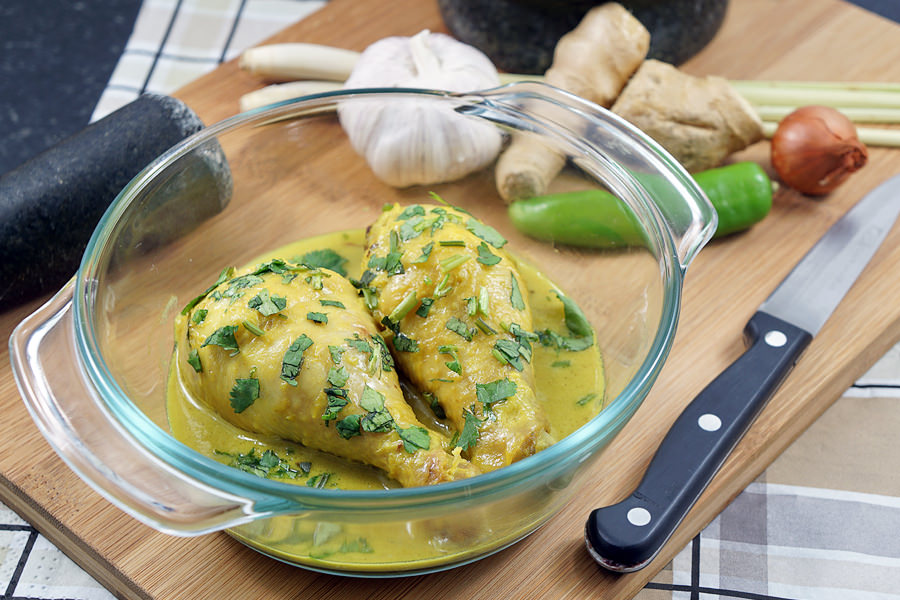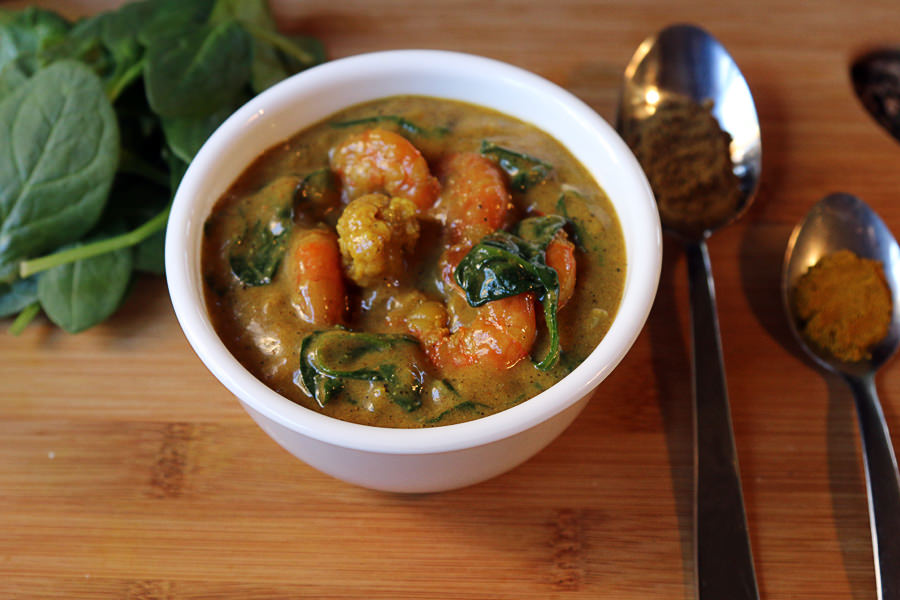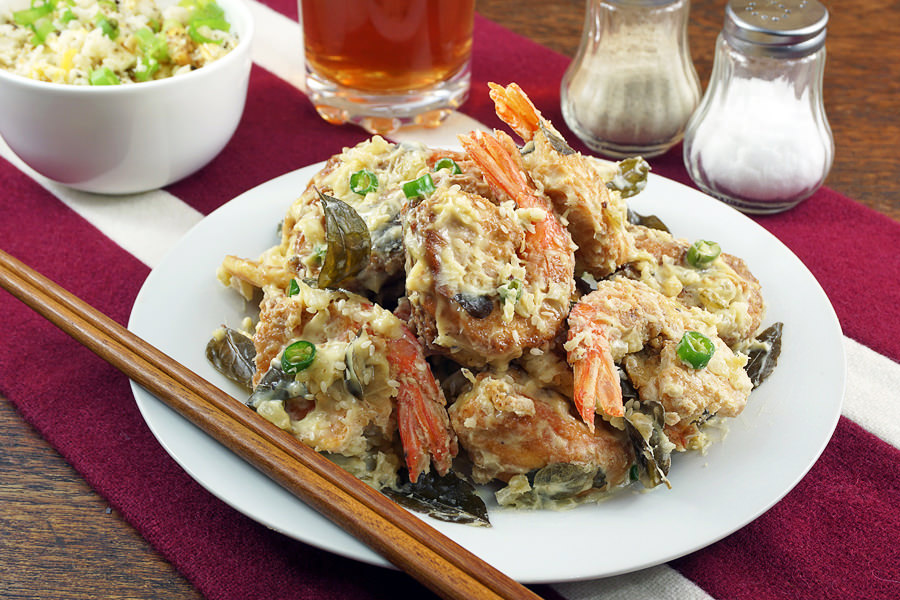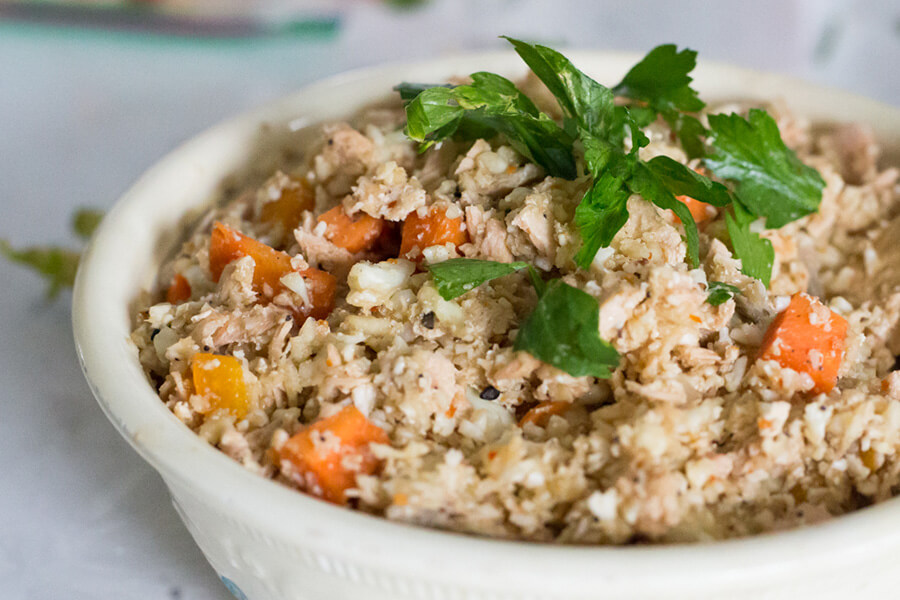Each Indian dish is packed with a diverse array of flavors and textures that are unmatched by other popular cuisines. Though the herbs and spices behind each satisfying bite are keto-friendly, they are usually paired with carb-dense ingredients that can keep us from experiencing the benefits of ketosis.
Fortunately, there are plenty of menu items and keto recipes you can choose from to get your Indian food fix. In this guide, we will dive into the world of keto Indian cuisine so you can experience the flavors you love while staying in ketosis:
- How to know what Indian food is keto-friendly
- Translating the menu into keto-related terms
- Best low-carb appetizers, entrees, sides, and drinks
- Easy-to-order takeout options
- Keto Indian recipes
- Key takeaways
How to Know What Indian Food is Keto (in 3 Simple Steps)
Since many popular Indian dishes are a mixture of ingredients rather than separate items on a plate, you’ll want to have some idea what to look for before you order. Not all curries are low carb, and each dish will be prepared differently depending on the restaurant.
This is why it is important to keep these three steps in mind when you eat Indian food on the keto diet:
1. Know what keto-friendly dishes you can rely on
Though it’ll be challenging to know precisely how many carbs are in what you eat, there are a few keto-approved menu items you can find at most Indian restaurants:
- Kabobs, kababs, or kebabs
- Most meat or seafood tandoori dishes (with sauce, chutney, or curry on the side) — Tandoori dishes are one of the simplest keto Indian options. They are marinated with plain yogurt and spices before being cooked in a tandoor (a cylindrical clay oven).
- Chicken, lamb, fish, or paneer tikka — Similar to tandoori dishes, but the protein source is cut into bite-sized pieces (this is what the word “tikka” signifies). Ask for the sauce, chutney, or curry on the side.
- Egg or Paneer Bhurji (served without rice or naan) — A scrambled egg or paneer dish with a satisfying combination of herbs and spices.
- Tandoori Chicken Salad — A low carb salad topped with tandoori chicken and served with mushrooms, paneer, lettuce, and tomatoes. Order the dressing on the side.
- Paneer tikka or tandoori (sauce or curry on the side) — a great vegetarian Indian option for keto
- Baingan Bharta (Punjabi Eggplant) — Roasted eggplant that is mashed together with pungent herbs and spices. It is one of the rare Indian dishes that is traditionally vegan and keto-friendly. However, you may have to double-check with the restaurant to see if they add any animal products (like cream or yogurt) to it.
Many curry-based dishes will also be keto-friendly, but their carb contents vary significantly depending on the type of curry and the restaurant that makes it. We will explore what curries to look for and avoid below.
2. Figure out what you should avoid and be cautious of
Now that you know the lowest carb Indian dishes, let’s take a quick trip through the menu to see what items are filled with carbs and what we should be cautious of.
In general, any menu item with one of the following words or ingredients are best avoided on keto:
- Chaat — A savory Indian snack that features fried dough and other high-carb ingredients.
- Aloo — Refers to a dish that contains potatoes.
- Naan — A flatbread that contains many of the same ingredients as a standard loaf of bread.
- Biryani — A low-fat, rice-based dish.
- Samosa — A fried or baked pastry filled with spiced potatoes, onions, peas, meat, or lentils.
- Dal — Typically refers to the use of lentils, which are not keto-friendly.
- Chana — A dish principally made from chickpeas or chickpea paste.
- Poori — Unleavened deep-fried bread.
- Papadum — A thin, crisp, round flatbread that is usually served with sugary chutneys.
- Vindaloo — A curry variation that usually contains potatoes and/or sugar.
- Dosa — A crispy rice and lentil crepe
- Uttapam — A thick pancake made of rice & lentils.
- Tamarind — If you notice a dish contains tamarind, this is referring to a tamarind paste (which is not keto-friendly).
- Most chutneys — mango, apple, and black tamarind chutneys should be avoided. The green cilantro mint chutney is keto-friendly if they don’t add sugar to it.
- Avial — This dish is typically made with a variety of high-carb fruits and vegetables such as unripe plantain, green mango, carrots, taro root, and potatoes.
- Manga curry — Another name for mango curry. This should be avoided since the featured ingredient is high in net carbs.
- Goan fish curry — A fish curry that typically features tamarind paste.
- Chicken korma — An almond- and cashew-based curry that contains several higher carb ingredients.
- Kofta — Fried dumpling balls made with mashed potatoes and spices.
- Bhaji, bhajji, Bhajiya, or bajji — a spicy snack or entree dish similar to a fritter that has a high-carb coating.
- Shaam Savera — Spinach and cheese dumplings that are typically served in a high-carb gravy.
- Paneer Makhanwala — A creamy vegetarian dish that usually contains milk, sugar, or honey.
- Basmati rice (or any other type of rice)
Be skeptical with:
- Fish Moilee — A coconut fish curry that may contain tamarind paste.
- Madras curry — This curry variation is usually made with tamarind paste.
- Saag dishes — A dish that resembles creamed spinach and is mixed with paneer, seafood, or meat. It will only be keto-friendly if they don’t add maize flour, corn flour, or “makki ka atta” to it. Double-check with the restaurant staff before ordering.
- All vegan dishes — Vegan-friendly Indian dishes typically use high-carb ingredients like potatoes, chickpeas, or dal (lentils) instead of meat, seafood, or paneer. They also tend to have tamarind paste in them.
- All other sauces and curries — They may use cornstarch or flour as a thickener and sugar for sweetness. Ask the waiter/waitress if they use any of these ingredients in the dish you want.
3. Read through the sections below for specific dishes, tips, and keto recipes
By taking some time to explore the remainder of this guide, you will discover a wealth of flavors that you simply won’t find with any other cuisine. Let’s continue our journey through the world of keto Indian food by taking a closer look at the menu, followed by some quick and easy recipes you can make at home. If you want a quick reference summary of this section, feel free to save the graphic below:

What About This? Translating Common Indian Dishes, Foods, and Ingredients into Keto-related Terms
Now we know the basics of what is and isn’t keto-friendly, but what about the rest of the menu?
Here’s a quick list of translations for common terms you’ll see while browsing the menu:
- Curry — A meat, paneer, seafood, or vegetable dish cooked in a thick sauce of strong spices and typically served with rice. The ingredients can vary in spiciness and carb content. How each curry is prepared will depend on the region, the restaurant, and the chef.
- Murgh — A chicken dish.
- Tikka — A dish that consists of small pieces of meat or vegetables marinated in a spice mixture.
- Masala — A spice mixture that is ground into a paste or powder for use in Indian cooking.
- Garam masala — A keto-friendly spice mix that is commonly composed of cumin, coriander, green and black cardamom, cinnamon, nutmeg, cloves, bay leaves, peppercorns, fennel, mace, and dried chilies.
- Saag — Typically refers to creamed spiced greens. Most saag dishes use spinach, which is a keto-friendly vegetable.
- Palak — Used to identify a curry with spinach as one of its primary ingredients.
- Methi — A dish that contains fenugreek.
- Gobi (also spelled Gobhi) — A dish with cauliflower.
- Malai — Refers to a dish that contains cream.
- Paneer — A fresh cheese common in the Indian subcontinent. Since it is not aged, it will still contain some milk sugars. One hundred grams of paneer has around 3.5 grams of net carbs.
- Gosht — A dish featuring red meat (beef, lamb, or mutton).
- Baingan — The word used for eggplant, a keto-friendly nightshade vegetable.
- Bharta — A dish of mixed vegetables that have been cooked and mashed together with pungent spices. This will only be keto-friendly if low-carb vegetables are used.
- Jhinga (or jheenga) — A dish featuring shrimp.
Best Keto Options at an Indian Restaurant: Appetizers, Entress, Drinks, and More
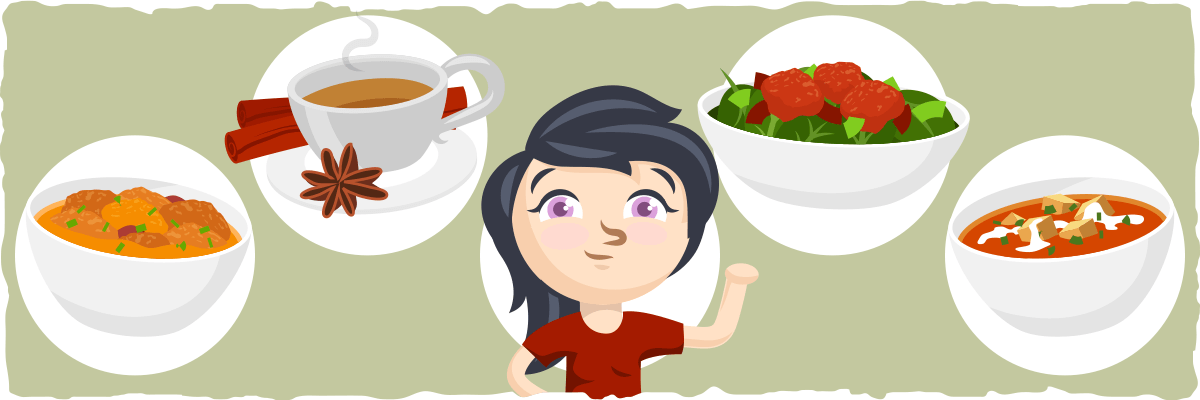
Now that we know what to expect, let’s learn about specific dishes and how you can order them in a keto-friendly way.
Please note: The only way to be sure of the macros (carbs, fats, and protein) going into your Indian dish is by making it yourself. If you’d rather track your keto lifestyle as closely as possible, stick with the keto-friendly dishes listed above and our top keto Indian recipes (found below this section).
Keto Indian Appetizers, Soup, and Salads
Though the majority of appetizers at an Indian restaurant contain multiple high-carb ingredients, there are a few satisfyingly flavorful keto-approved options:
- Chicken tikka — Small pieces of boneless chicken baked using skewers after marinating in Indian spices and Dahi (unsweetened yogurt).
- Calamari Cochin (or kochin) — A delicious mix of spices, herbs, and calamari. Avoid if this is fried and breaded.
- Kabab sampler — An assortment of marinated meats grilled over charcoal fire. Avoid the sweet chutneys this may be served with.
- Tandoori medley — A mixture of different tandoor-cooked meats.
- Kalmi Kabab — Skewered chicken wings marinated with roasted spices. Avoid the sweet chutneys this may be served with.
- Chicken Soup — A curried chicken broth that is mildly spiced. Avoid if it comes with dal or chickpeas.
- Kachumber Salad – Typically includes lettuce, tomatoes, cucumbers, and olives. Ask for kabab or a tandoori protein (meat, seafood, or paneer) for more fat and protein.
- Tandoori Chicken Salad — A low carb salad that is topped with tandoori chicken and served with mushrooms, paneer, lettuce, and tomatoes.
Soups and salads will vary widely in their carb, fat, and protein content, so make sure to confirm with the restaurant that it is keto-friendly for you.
Keto-Friendly Indian Entrees ( Non-vegetarian)
The following entree options will be lowest in carbs when consumed without any sauce, gravy, chutney, or curry:
- Tandoori Chicken — This is one of the best takeout options since it is almost always keto-friendly. Just make sure to get the sauce on the side.
- Chicken Malai Kabab — Chicken marinated in yogurt, ginger and white pepper.
- Methi Salmon — Salmon that is lightly marinated with fenugreek, ginger, and garlic before cooking.
- Tandoor Jumbo Shrimp — Shrimp marinated with yogurt and ginger-garlic sauce before being grilled in a tandoor.
- Rack of Lamb Tandoori — Rack of lamb marinated with yogurt, light spices, and scented with rosemary, grilled in a tandoor.
- Tandoori medley — A mixture of different tandoor-cooked meats.
With every dish, remember to skip the rice, naan, and crisps (papadum).
Keto-friendly Curry Entrees
Below we’ve included a list of the curries that tend to be lowest in carbs:
- Dhaba Style — A spicy chicken curry based on the spices and chilies found in Northern India.
- Chettinad — A fiery south Indian dish originating from Chettinad. It typically consists of chicken marinated in yogurt, turmeric, and a paste of red chilies, coconut, poppy seeds, coriander seeds, cumin seeds, fennel seeds, black pepper, ground nuts, onions, garlic, and gingelly oil.
- Bhuna — a popular curry in Pakistan that is typically made with mutton or lamb. The meat is slow-cooked in whole spices, chopped onion, ginger, and garlic. It is then fried with lots of ghee and garnished with coriander.
- Jalfrezi — A spicy curry that goes well with meat, fish, paneer, and vegetables.
- Karahi or Kadai — Any kind of meat cooked with onion, green pepper, tomato, ginger, and garlic, in a special kadai masala herb.
- Rogan Josh, Roghan Josh or Roghan Ghosht — An aromatic curried meat dish of Kashmiri origin. It is made with red meat, traditionally lamb or goat, and flavored with Kashmiri chilies.
- Butter Chicken (Murgh Makhani) — A very rich and mild curry that features butter and cream. This may be made with evaporated milk, corn starch/flour, or added sugar, so double-check with the waiter or waitress before ordering.
- Phaal — Known as the hottest curry in the world. This is usually prepared in a keto-friendly way.
- Madras — A mildly spicy red curry made with a lot of red chilies. Make sure they don’t add sugar or tamarind paste to it before ordering.
- Saag — Creamed spinach with a kick of flavor, served with your protein of choice.
Heir on the side of caution with all curry dishes. Even the ones that seem keto-friendly may contain tamarind paste, sugar, or flour/starch.
Low-Carb Indian Vegetarian Entrees
A lot of the Indian vegetarian entrees contain lentils, chickpeas, or high-carb vegetables like potatoes or green peas. Thankfully, there are a few Indian plates that won’t overload you with starchy plant foods.
Keto-friendly vegetarian Indian entrees include*:
- Vegetable or Paneer Curry — Paneer or any low-carb veggie cooked in one of the curries mentioned above.
- Paneer Tikka — Homemade cheese cubes marinated with ginger & garlic and seasoned with fresh herbs and spices.
- Vegetable or Paneer Saag — Creamed and spiced greens with cheese or low-carb vegetables.
- Palak Panner — Similar to Saag, this is a curry made with spinach, onion, ginger, and paneer.
- Baingan Bharta or Baigan ka bharta — Roasted eggplant mashed together with herbs and spices. This can be made 100% vegan if they don’t use cream or yogurt.
- Balti Baingan — Like baingan bharta but with a creamier curry texture from the addition of plain yogurt.
- Sarso Ka Saag — A creamy curry dish that features mustard greens. This may be thickened with maize flour.
- Paneer or Egg Bhurji — Scrambled cheese or eggs with onion, tomatoes, and spices.
*Make sure they don’t add any potatoes, peas, tamarind paste, sugar, corn starch, or corn flour to these dishes. Refer to our keto vegetarian guide for a closer look at keto-approved options and what ingredients to avoid.
Keto-friendly Indian Sides: What about Naan?
No matter what Indian restaurant I go to, the waiter or waitress will always ask if I want a side order of naan and rice. Since both are concentrated sources of carbs with no nutritional value, try asking for one of these side items instead:
- Raita — A traditional side dish of plain yogurt with chopped cucumber, onions, tomatoes, herbs, and spices. Feel free to use it as a dipping sauce with your tandoori dishes and kebabs.
- Kachumber Salad — A simple salad with lettuce, tomatoes, cucumbers, and olives. Ask for olive oil and vinegar for a keto-friendly dressing and extra fat (or bring your own dressing).
If you really miss the naan, try bringing low carb tortillas instead. They won’t have the same fluffy texture, but they will provide a satisfying bread-like bite that will help balance out the richness of any keto Indian dish.
What about Low Carb Indian Drinks?
Though water, unsweetened black tea, and diet soda will also be available, there are a few Indian-inspired beverage options you may find on the menu:
- Masala Chai — A delicious black tea with a mixture of Indian spices and herbs. It’s a nice change-of-pace if you usually drink unsweetened tea.
- Chaach – A unique combination of buttermilk, chilies, coriander leaves, and mint.
- Jal Jeera — This is a popular summer drink in India. It is made with cumin, ginger, black pepper, mint, black salt, some fruit powder (usually mango or citrus zest), and chili powder.
Keep in mind, however, each drink may come with added sugar or milk. Order it without any milk or sugar. Feel free to add heavy cream and a keto-friendly sweetener of your choice to help balance out the potent flavors these drinks tend to have.
Are There Any Keto Indian Desserts?
Rarely will you find a restaurant with low-carb options for dessert. This is especially the case with Indian restaurants. To satisfy your sweet tooth, it is best to make a keto dessert yourself or bring a keto-friendly sweet with you.
If you are looking to take your taste buds on a unique flavor journey, try making a batch of chocolate curry cupcakes. Though this isn’t a traditional Indian dessert, it features many of the spices that make this cuisine so satisfying.
Eating Takeout at Indian Restaurants: Quick Keto Meals, Snacks, and Tips
The safest bet for an Indian meal that is easy-to-order, delicious, and keto-friendly will be tandoori dishes and kebabs (without any sauce, chutney, curry, naan, or rice).
Here are some examples of quick, keto-approved dishes that’ll be easy-to-order for pick up or delivery:
- Tandoori chicken
- Chicken tikka (not chicken tikka masala)
- Chicken malai kabab
- Methi salmon
- Jumbo tandoor shrimp
- Lamb tandoori
- Tandoori medley
- Paneer tandoori (for vegetarians)
- Tandoori chicken salad
The appetizer portion will make a great high-protein, keto-friendly Indian snack option, while the entree option serves as a light high-protein meal. To add some extra fat, ask for a side Raita and replace the rice (and/or naan) with a side salad or kachumber salad. You can also use your own keto dressing on the meat and salad for even more fat and flavor.
Unfortunately, even with these easy-to-order options, you may still be missing out on some of your favorite palate pleasers. To get the full spectrum of flavor with the right balance of fat and carbs for keto, it is best to make your favorite Indian dishes at home.
Top Keto-Friendly Indian Recipes
Here are our most popular Indian recipes that anyone on keto can enjoy. Click on the photo or the button to see how the recipe is made.
Slow Cooker Keto Chicken Tikka Masala
Though it is one of the most popular Indian dishes, whether or not your chicken tikka masala will be keto-friendly depends on the restaurant you order from. This is why the best keto curry option is one that you make yourself.
With this dish, you’ll find all the flavors you’re craving without any hidden carbs. Serve it on top of cauliflower rice if you would like to replace basmati rice with a healthier keto substitute.
Butter Paneer Chicken Curry (with a keto-friendly vegetarian option)
If your go-to Indian dish is butter chicken, you’ll love this keto-approved alternative. It features several authentic Indian spices and seasonings that give it a rich depth of flavor you rarely experience with other keto meals.
You can also customize this recipe to make it vegetarian-friendly. Simply omit the chicken and add some extra paneer. Just make sure you are cautious of the net carb content since paneer contains some milk sugars.
Low-Carb Chicken Curry
Although it is used in authentic dishes throughout the region, I’ve yet to find a dish that features lemongrass on an Indian menu. If you haven’t had a meal like this, it’s worth trying at least once.
This coconut-based curry is easy to make, filled with healthy fats and packed with a unique blend of flavors (and health-promoting phytonutrients) from the green chili, garlic, ginger, lemongrass, and turmeric. Feel free to make the curry by itself whenever you need to add some flavor to a bland meal.
Shrimp and Cauliflower Curry
Similar to Bhagari Jhinga (Indian Shrimp Curry), this keto dish has all of the elements that make us crave Indian food. Though shrimp is the featured ingredient, you can whip this up with any protein you have on hand. You can even make this into an Indian seafood curry or fish stew without having to worry about hidden carbs from flours, starches, and tamarind paste.
The list of ingredients with this recipe is long, but it’ll pay off in the long run. Not only will they help you create a delicious curry, but you’ll also have several unique spices you can use in future meals as well.
Creamy Butter Shrimp
You won’t find this at your local Indian restaurant, but the fusion of Indian spices and everyday keto staples in this recipe will satisfy your craving. In fact, this creamy butter shrimp is so rich that each bite will have the full spectrum of flavors you want.
If you are not a fan of shrimp, simply replace it with your desired protein source — this recipe will work great with practically any cut of meat or fish you put in there. Try having it with a small bowl of Cauliflower Fried Rice on the side for a complete keto meal.
Spicy Cauliflower Rice & Salmon Medley
Though Japanese-inspired flavors dominate this dish, it is still an excellent keto-friendly replacement for salmon biryani. The combination of herbs, spices, cauliflower, healthy fats, and salmon makes this medley one of the healthiest and most flavorful dishes you can have on keto.
Even if you don’t have salmon, feel free to replace it with your preferred protein source — or serve it as a side dish with one of the Indian recipes above.
Key Takeaways: How to Add Indian Food to Your Keto Lifestyle
Whether you are eating out, ordering takeout, cooking at home, or looking for a quick snack, you can eat Indian food while staying in ketosis and experiencing the benefits of keto.
To fit more Indian dishes into your keto diet, make sure to follow these three rules:
- Stick to simple dishes that feature simply prepared meats and low-carb vegetables. Tandoori dishes, tikka dishes (without sauce or curry), and kebabs are the lowest carb options.
- Avoid common carb-rich ingredients (tamarind paste, mango, chickpeas, dal, rice, naan, fried foods, potato, etc.).
- Plan ahead by looking for keto-friendly menu items and making keto Indian recipes.
For some ideas on what you can make to satisfy your craving for Indian food, here is a quick recap of the keto recipes we discussed earlier:
- Slow Cooker Keto Chicken Tikka Masala
- Low-Carb Chicken Curry
- Shrimp and Cauliflower Curry
- Butter Paneer Chicken Curry
- Creamy Butter Shrimp
- Spicy Cauliflower Rice & Salmon Medley
- Best Low Carb Tortillas (can be used as a keto naan substitute)
If you are looking for a larger selection of delicious keto vegetarian options, check out our vegetarian recipe roundup.
As with any keto meal, however, make sure you know how it fits into your nutritional needs for the day. Your body composition will depend on what and how much you eat.
To help you figure out what this means for you, we’ve included several tools and plans that’ll help guide you toward the results you want:
- Our keto calculator — Find out how much you need to eat to meet your goals
- Our vegetarian ketogenic diet guide — an in-depth guide with recipes and a free meal plan
- Our 14-day meal plan — One month of keto meals mapped out for you
- Keto Academy — A comprehensive meal plan and step-by-step keto guide with expert advice
